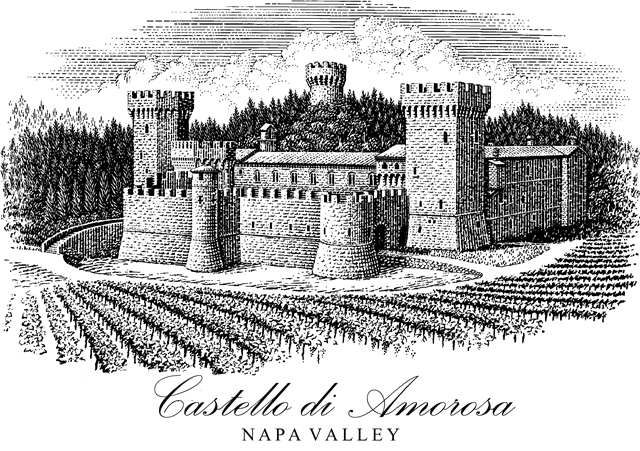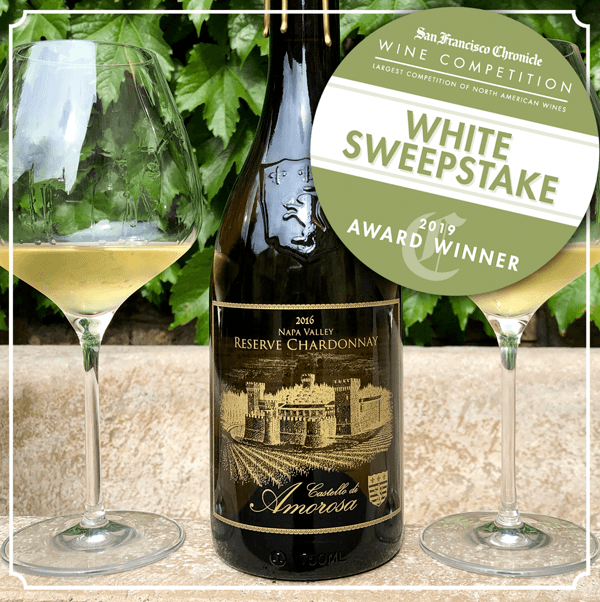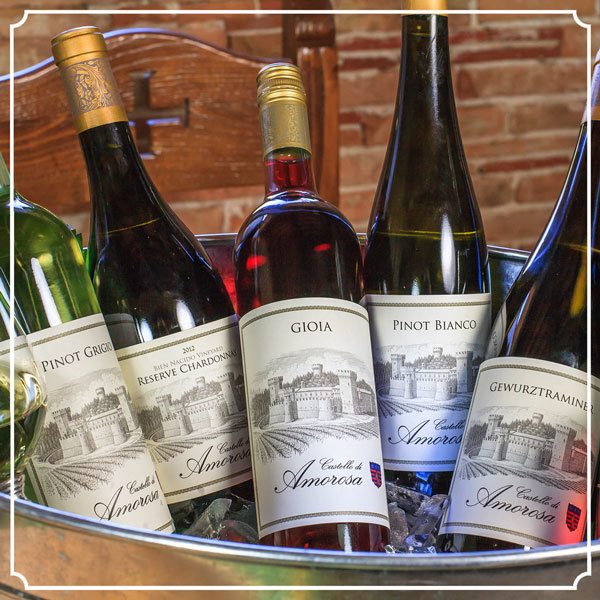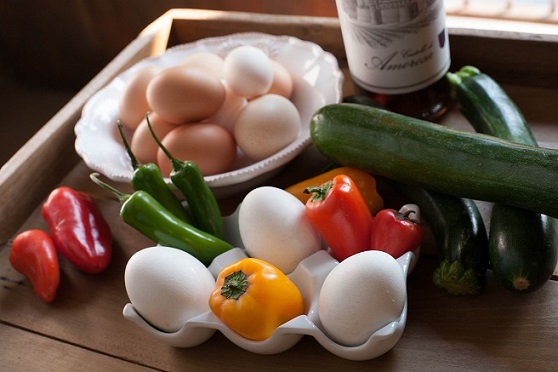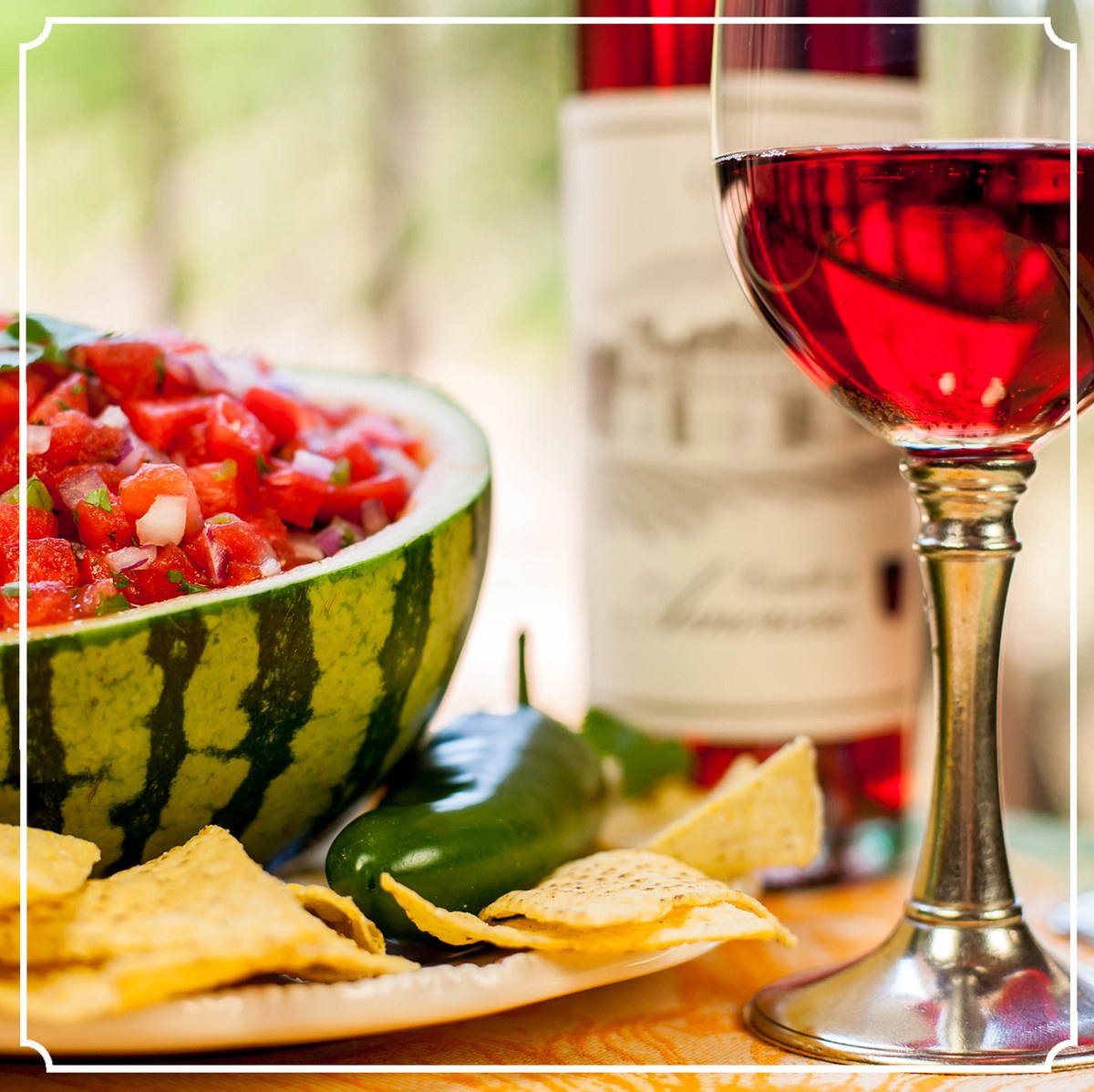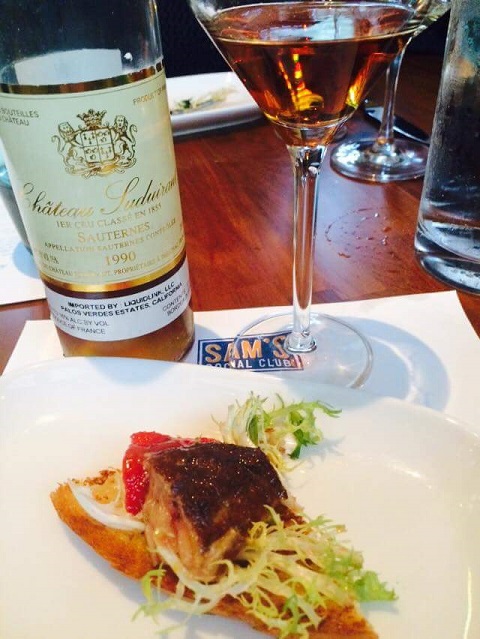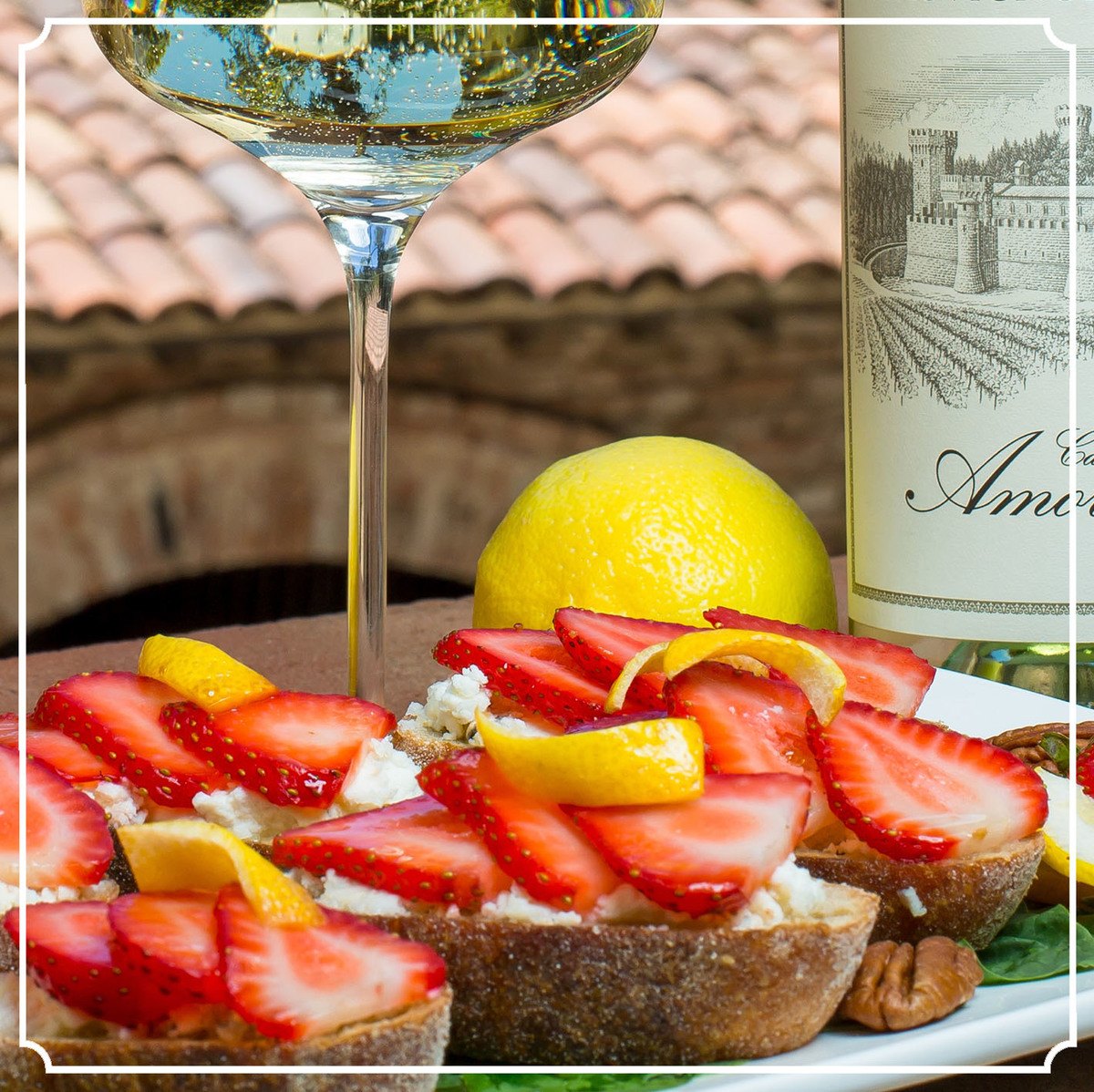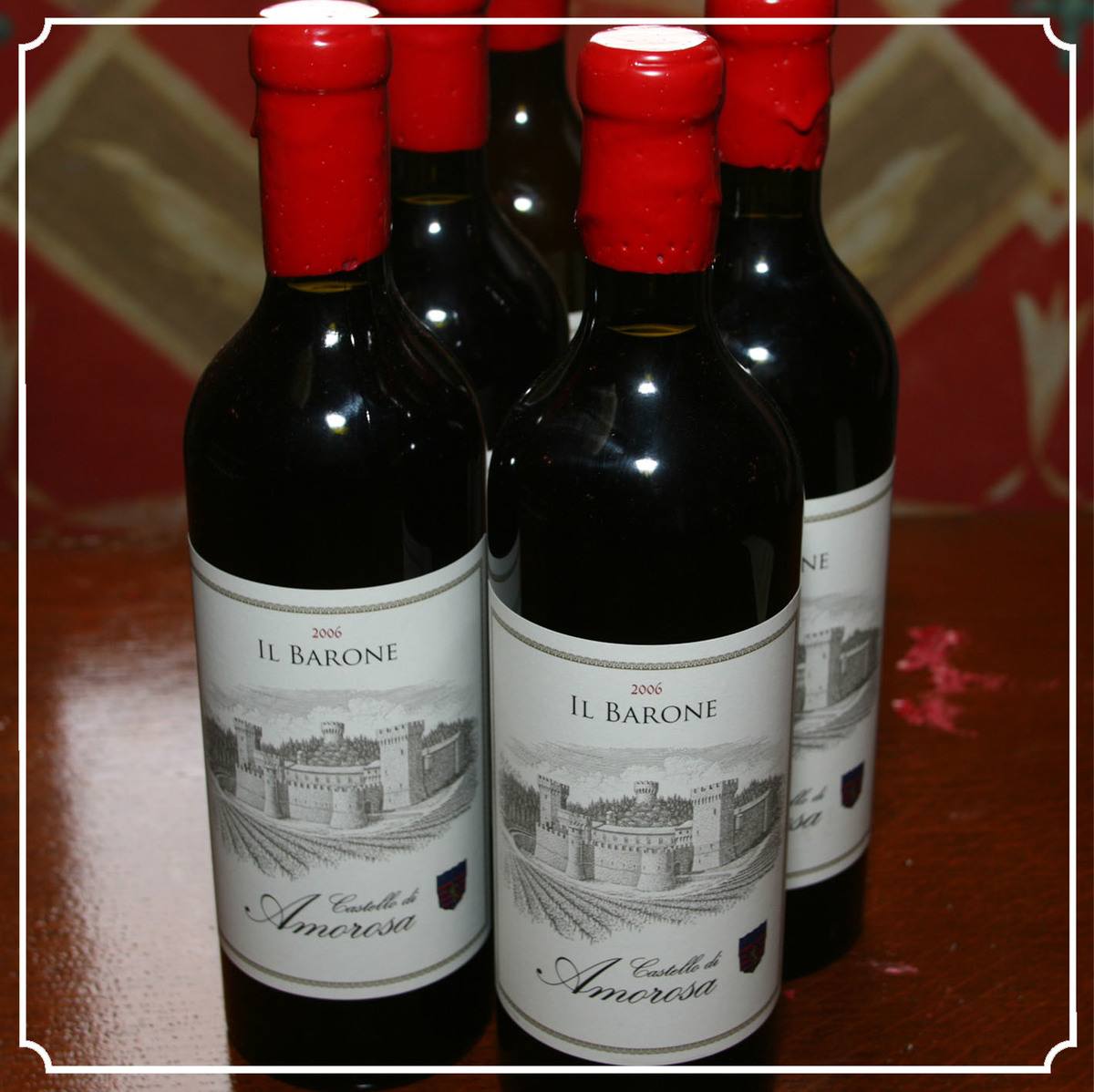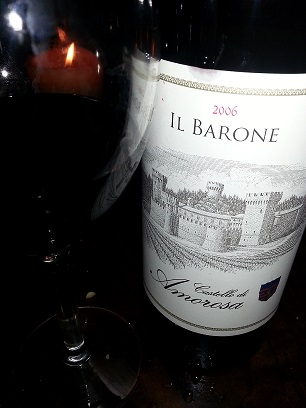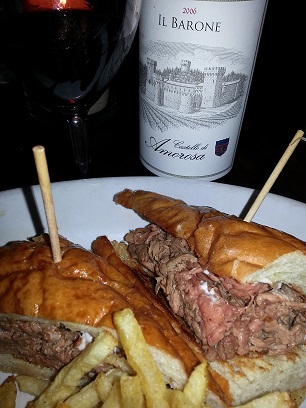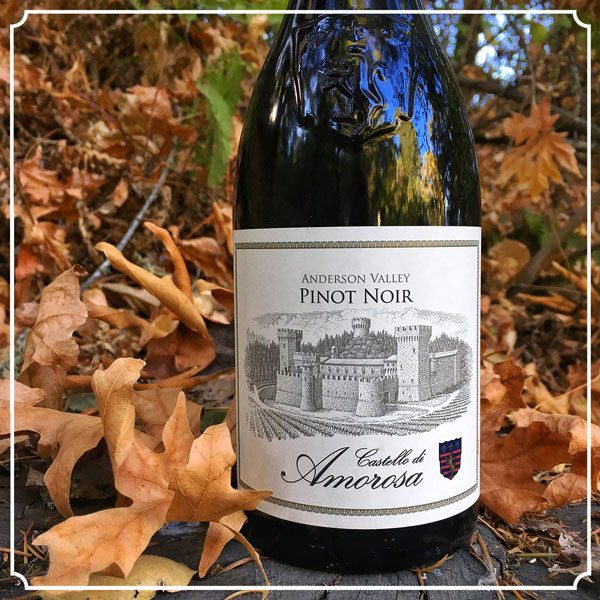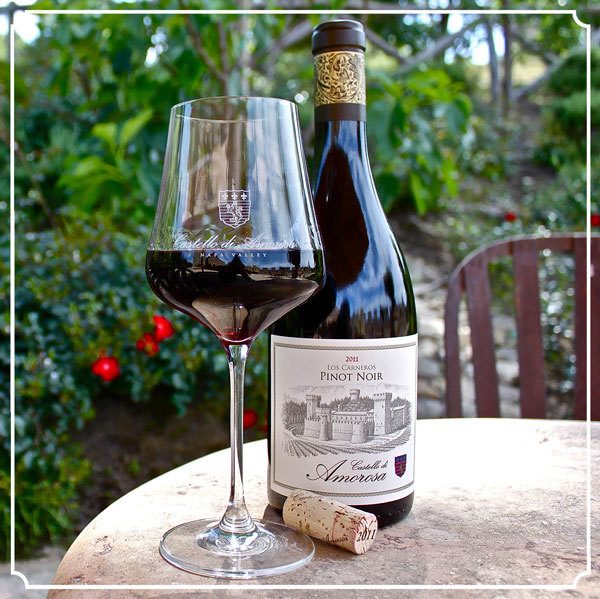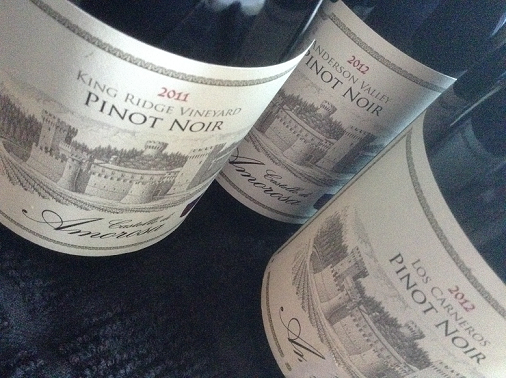2017 Reserve Chardonnay wins Best White Wine at the SF Chronicle Competition!

Fantastic awards from the 2019 San Francisco Chronicle Wine Competition
We are thrilled to announce that our 2017 Reserve Chardonnay was named the White Sweepstakes Winner in this year’s San Francisco Chronicle Wine Competition, which is the largest competition of wines from across the United States, Canada, and Mexico.
Over 64 professional wine judges evaluated over 6,800 wines from 1,132 wineries, and our Reserve Chardonnay was one of 9 wines which were awarded sweepstakes medals. To achieve this distinction, our Chardonnay had to win in its price category, then win against all other Chardonnays across all price points (which comprised over 60% of the 2,500 white wines in the competition), and finally triumph in the field of all other winning white wine contenders.
Bob Fraser, Executive Director of the competition, elaborated on this achievement, stating “along with the Red Sweepstakes, the White Sweepstakes is very difficult to attain for a winery because it is competing against over 2,500 other outstanding white wines from a multitude of viticultural areas in North America. What is even more remarkable is that this marks the fourth time Castello di Amorosa has won the coveted San Francisco Chronicle Wine Competition Sweepstakes award. In the past the winery won the White Sweepstakes in 2017 for its 2015 Anderson Valley Gewürztraminer and won in consecutive years (2012-2013) for its Dessert Sweepstakes Anderson Valley Late Harvest Gewürztraminer. This illustrates a pursuit of excellence for the winemaking team at Castello di Amorosa.”
The San Francisco Chronicle Wine Competition is the largest wine competition in North America. Founded in 1983 as the modestly sized Cloverdale Citrus Fair Wine Competition, the SFCWC has expanded tremendously over the years, gaining title sponsorship from the San Francisco Chronicle in 2000. Now celebrating the 19th anniversary of the competition, the SFCWC is considered the barometer of how consumers select and measure their wine.
The public will have a chance to taste the award winning wines at The San Francisco Chronicle Wine Competition’s Public Tasting on Saturday, February 16 from 1:00 to 4:00 p.m. at Fort Mason Center’s Festival Pavilion in San Francisco. Click here for tickets and additional information.
About the 2017 Reserve Chardonnay
Our 2017 Reserve Chardonnay was sourced from two vineyards in the cooler southern end of Napa Valley, and harvested between August 17 and September 13. It was fermented and aged sur lie in 100% new Burgundian oak barrels, with 75% of the wine undergoing malolactic fermentation, which lends to a round and balanced full-bodied Napa Valley Chardonnay with lush notes of baked apple, ripe pear, fall spices and toasted almond.
Winemaker Peter Velleno noted “the 2017 vintage quality is showing very high quality, with a lot of bright acidity and fresh varietal aromas in the white wines, along with deep color and sweet fruit flavors. We think our Reserve Chardonnay is an excellent example of this exceptional growing season in Napa Valley.”
Mary Davidek, who runs our highly acclaimed Royal Food & Wine Pairing Tour at the Castello, recommends pairing creamy dishes such as Fettuccine Alfredo with the Reserve Chardonnay, to complement the creamy elements in the wine. For a lighter pairing, her Ahi Avocado Salad with Ponzu (pictured below) makes a bright and refreshing accompaniment to the full-bodied Chardonnay.
All awards from the 2019 SF Chronicle Wine Competition
Castello di Amorosa also received a number of Gold and Double Gold Medals, along with a fifth consecutive Best of Class medal for our 2017 Dry Gewürztraminer. Check out the complete list of award winners:
- 2017 RESERVE CHARDONNAY – Sweepstakes, Best White Wine
- 2017 DRY GEWURZTRAMINER – Best of Class (5th vintage in a row)
- 2017 PINOT NOIR, THREE ARROWS RANCH – Double Gold Medal
- 2014 MERLOT, NAPA VALLEY – Double Gold Medal (2nd vintage in a row)
- 2015 CABERNET SAUVIGNON, NAPA VALLEY – Double Gold Medal
- 2014 IL BARONE, RESERVE CABERNET SAUVIGNON – Double Gold Medal (2nd vintage in a row)
- 2016 ZINGARO, OLD VINE ZINFANDEL – Gold Medal
- 2014 LA CASTELLANA, SUPER TUSCAN BLEND – Gold Medal
We are so proud of our fantastic winemaking team, and look forward to sharing all of our award-winning wines with you!
The Quick Chill

The Quick Chill: How to Quickly Chill Wine to Serve
One of the most frequently asked questions we get in our tasting room is how to age, store, and serve our wines, which can vary greatly depending on the type of wine being talked about (for a handy reference, check out our Ageability and Cellaring Chart to see just how to store and serve your favorite bottles of Castello wines). But if you’re looking for the fastest way to chill your favorite wine bottle tonight and need a quick tip on the best temp to serve it, look no further! We’ve got a few wine serving secrets that will teach you how to quickly, and properly, chill a wine bottle before serving to get the most out of every drop…

First and foremost, “Room Temperature” is normally not the correct temperature to serve your red wines! If the room your wine has been stored in is on the warmer side (above 65° F), your wine will be too warm and those beautiful fruit flavors will be masked by a stronger presence of alcohol. Conversely, your white wine stored in your refrigerator will most likely be too cold if you pop the cork right after you take it out, again masking the fruity or floral notes and structure with simply a refreshing temperature (think about that ice cold bottle of Pinot Grigio you consumed much faster than anticipated).
Here’s a good rule of thumb for how to quickly chill wines before serving when you don’t have access to a wine fridge:
♦ Red Wines: if your red wine is at room temperature and your room is warm, pop the bottle in the fridge for 15 minutes. This allows the temperature of the wine to drop just enough to reveal the beautiful layers within the bottle. For lighter bodied reds (especially Pinot Noir), it’s best to err on the cooler side, as the flavors and aromas of these wines tend to be more delicate and benefit from a slightly cooler temperature.
♦ White Wines: if your white wine is coming straight from your fridge, let it sit at room temperature for 15 minutes, bringing the temperature up just slightly so you can enjoy all of the wonderful fruits and flavors in your glass. If you’re in need of a super quick chill and forgot to put that wine bottle in the fridge in the first place, don’t panic! Wrap a wet paper towel around your room temp bottle and pop it in the freezer for 15 minutes and it will be the perfect serving temp before you know it! Just be sure to set a timer so you don’t forget about it!
Most red wines should be served between 60-65° F. Most white, rosé, and sweet wines should be served between 47-52° F. The Quick Chill is an easy trick that should help to make sure you get the most enjoyment from every sip!
Salute!
TGI Frittata

Mary Davidek
TGI Frittata: How to Make a Frittata (Italian-Style Omelet)
I was raised in a large and lively household. With 2 parents, 4 of us kids along with 1 grandparent, my mother was faced with the daunting challenge every week to procure economical yet delicious ways to feed our sometimes demanding and always hungry mob. Schedules were constantly changing, I had piano lessons and swimming, and my brothers balanced after-school jobs and sports. In the summer, Dad often worked late. This meant not only did food have to be delicious and economical, but had to be just as good and easily re-heated to accommodate our unpredictable schedules.
Sunday night pasta was a regular on our menu. Essentially leftover tidbits from the week slow-cooked in a rich tomato sauce and served over pasta, a good way to start a busy week. Soups were another yummy option and minestrone often filled the pot. Basic minestrone was a smart use of left-over roast beef with an assortment of veggies and pasta. Frittata was a popular catch-all in our house and seemed to be a Friday night staple. The saying became TGIFrittata!
Frittata is a flat Italian-style omelet that’s usually prepared in a cast-iron skillet. A Frittata can be made with an assortment of ingredients; mushrooms, broccoli, cauliflower, or zucchini. For a heartier main course preparation, ground sausage, bacon or potatoes can be included. To make a frittata, beaten eggs are cooked briefly in a hot skillet along with other ingredients like onions, spinach, bacon, and/or potatoes, and then topped with cheese and finished in the oven.
The Castello provided the bounty for this frittata. The royal chickens supplied the organic free-range eggs. From the castle garden; zucchini, red and yellow pepper, and serrano chili peppers.
The kick of spice made the wine selection for this brunch easy—Gioia, a dry and fruity rosé of Sangiovese.
When cooked in a round skillet, frittata is traditionally sliced into wedge-shaped portions for serving. And re-heated…it was just as yummy as it was just out of the oven.
Frittata
♦ In a medium-sized bowl, using a fork, blend 4 – 6 eggs, grated Parmesan, 1/2 tsp pepper, and 1/4 tsp salt.
♦ Heat a 12-inch non-stick, oven safe saute pan over medium-high heat.
♦ Add butter to the pan and melt. Add frittata contents. Pour the egg mixture into the pan and stir with a rubber spatula.
♦ Cook for 4 to 5 minutes or until the egg mixture has set on the bottom and begins to set up on top.
♦ Sprinkle with parsley and additional grated parm.
♦ Place pan into the oven and broil for 3 to 4 minutes, until lightly browned and fluffy.
Mary Davidek C. S., S.W.
Summer (Food and Wine) Ramblings

Mary Davidek
Summer (Food and Wine) Ramblings
Admittedly, I have been remiss in my food and wine blogging; although I have been writing (daily), thinking (constantly says this insomniac), photographing (my nemesis, just putting it out there) all while enjoying amazing meals and drinking ridiculous wine. Ridiculous meaning copious amounts of delicious, of course. I have been taking pictures and eventually it all comes down to….just do it. The following are a few images (be kind) and I will keep it going through the season of summer ramblings.
I encourage you to email your ramblings–inspirational recipe ideas along with pictures of friends and food with Castello di Amorosa wine to foodandwine@castellodiamorosa.com
Happy summer!
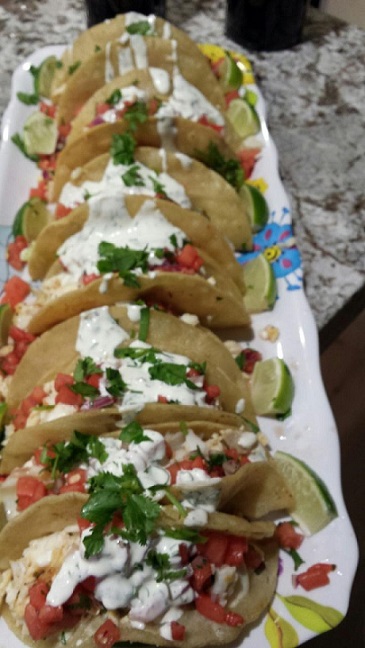
Fresh halibut fish tacos with watermelon salsa and tequila lime crema. Halibut courtesy of top angler and Napa native Tim Berg of Peninsula Processing (http://www.great-alaska-seafood.com/)
As we wait for summer’s tomato harvest this cool and refreshing Watermelon Salsa is super tasty and perfect to top any grilled white fish:
- 3 cups diced seedless watermelon
- 2 jalapeno peppers, seeded and minced
- 1/3 cup chopped cilantro, (approx. 1/2 bunch)
- 1/4 cup lime juice
- 1/4 cup minced red onion (1/2 small)
- 1/4 teaspoon salt
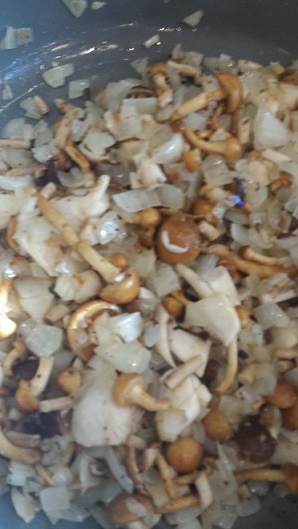
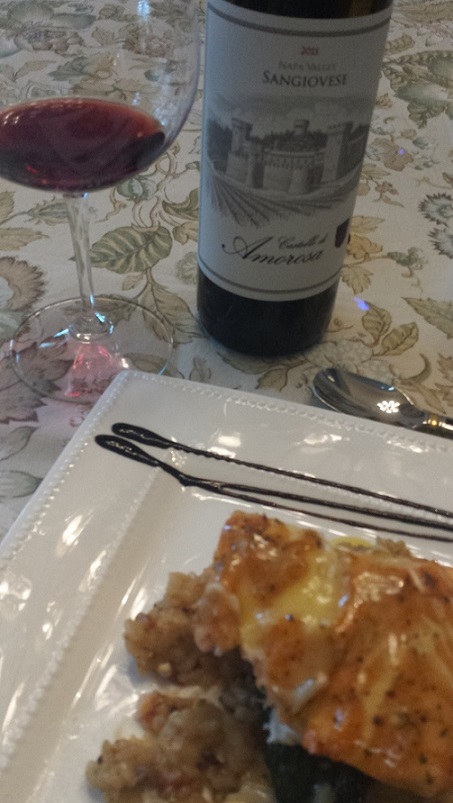
This was the final road trip for our 2011 Sangiovese. Paired with halibut and exotic mushroom and shallot risotto. This wine was ideal for the rich creamy risotto and earthy mushrooms.
In nearby Calistoga, Sam’s Social Club at the newly renovated Indian Springs Resort has become a popular dining spot for up-valley residents. Pictured is seared Foie Gras paired with a classic 1989 sauternes. Next time I am bringing Il Passito Reserve Late Harvest Semillon/ Sauvignon Blanc, as Sam’s never charges a corkage fee! Castello di Amorosa’s Il Passito is made with classic sauternes wine-making techniques. Extended French oak fermentation delivers not only an extremely age worthy wine but provides layers of complexity and unctuous mouthfeel.
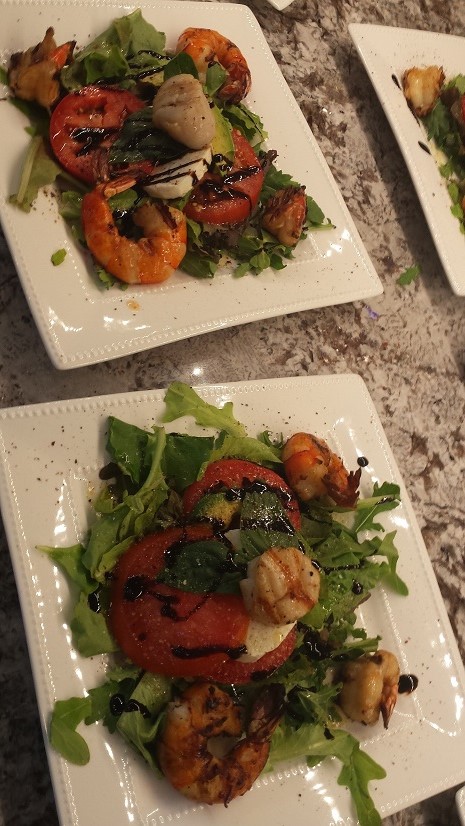
Caprese salad with grilled shrimp and scallops turns a starter salad into a delicious entrée.
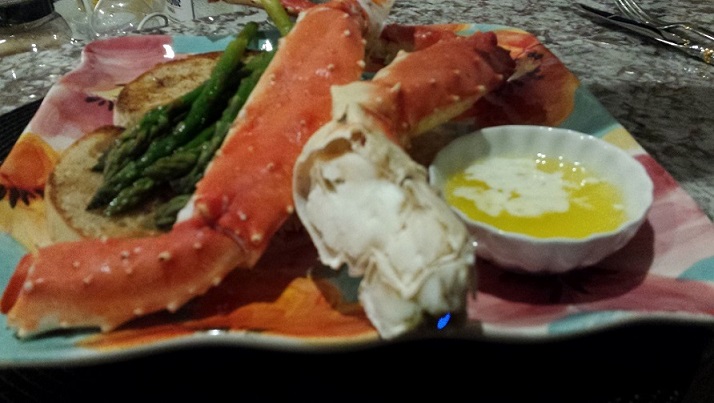
Because it is good to be king! King Crab Legs, yum!

And finally, enjoy your summer of food and wine ramblings with amazing friends!
Mary Davidek C. S., S.W.
Five Easy Pieces

Mary Davidek
Five Easy Pieces
This is an extremely busy time of the year and I don’t see a clear window of nothing-much-going-on until 2015 (yikes)! Aside from standard work activity along with not so standard work activity (see link below), November brought birthdays (including mine!), weddings, anniversaries, and, of course, the big one–Thanksgiving. Factor in necessary travel and shopping for these celebrations and it adds up to ‘I don’t have time to insert activity here‘.
This is also the season for parties and entertaining; from the office to the dining room holiday festivities are everywhere. Some of this merrymaking is planned but others are more…well… impromptu. While pop-up happenings are intended in the spirit of cheerful tidings these bombshells… er, I mean pleasant surprises.. can be stressful and hectic. To facilitate the fun and merriment while reducing the stress, keeping just a few indispensable items in the fridge and pantry make last minute entertaining truly entertaining. I keep an arsenal of all ‘the fixings’ on hand throughout the holiday season. When these easy apps are paired with the right wine you are transformed into an accomplished and relaxed holiday-entertaining pro.
I call these go-to bite-sized nibbles ‘Five Easy Pieces’.
Check out the provided link for a 30 minute interview about the Castello and the food and wine program; ‘The Royal Pairing’. This was a fun radio segment on CRN Digital talk radio. You can listen to my interview here.
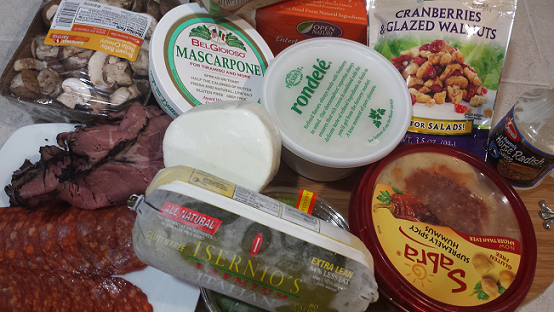
The ammo; hummus, pesto, mascarpone, goat cheese, mushrooms, ground sausage, dried fruit and nuts, deli roast, sliced chorizo, baguette, crackers, creamy horseradish sauce. These items have a long shelf life and perfect to keep on hand.
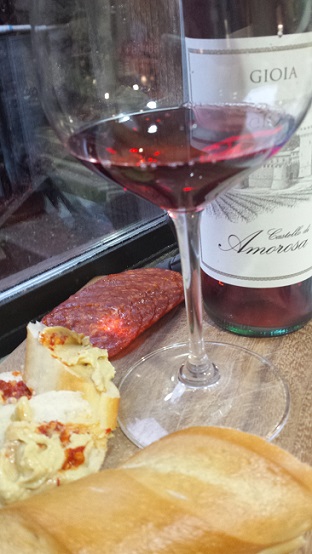
Serve roasted red pepper hummus with a chilled glass of Castello’s Rosato de Sangiovese, Gioia.
Now that is what I call a joyful tiding!
As long as the Gioia is chilled serve a sliced baguette with a light spread of mascarpone topped with chorizo. A spicy bite for sure but so delicious with this bright and sassy rosé.
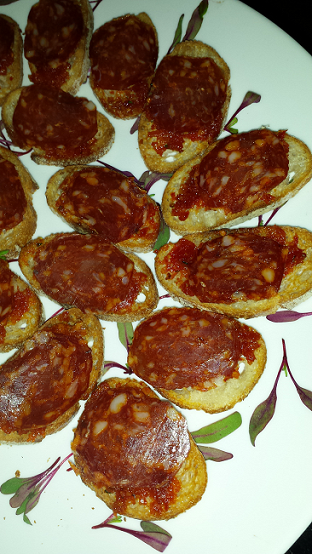
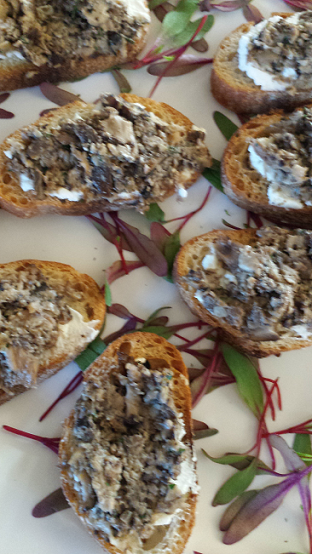
For this topper I browned sausage and then added sauteed finely chopped mushrooms sauteed in butter. To the final mixture add a couple generous tablespoons of chopped nuts and cranberries and brown a bit more. Served on crostini this tasty bite almost mimics a deconstructed holiday stuffing.
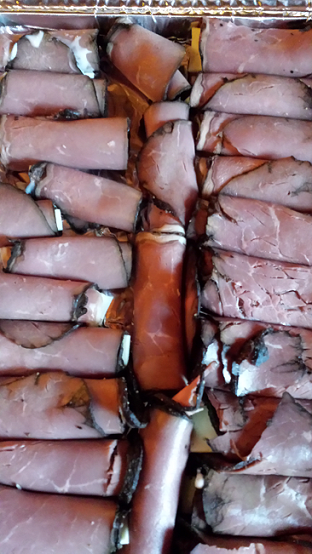
This is a crowd pleaser, even if it is a small crowd! I rolled deli roast beef around a sprinkle of shredded mozzarella and a generous smear of creamy horseradish. Heat in the oven until the cheese is melted. Delish with a full-bodied red blend like the Il Brigante.
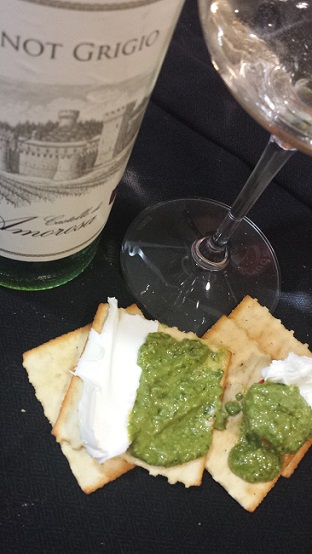
If you have ever tasted with me at the Castello on the Royal Food and Wine Pairing you know how delicious a cracker with pesto and goat cheese can be. The Castello’s Pinot Grigio is bright, succulent and juicy; a perfect yet simple mouth-watering duo.
And…..you’re welcome for these easy wine night snacks!
What Moves You

Mary Davidek
What Moves You: The 2014 South Napa Valley Earthquake
“Movement: an act of changing physical location or position or of having this changed”
I have been exposed to substantial movement lately. As most are aware, early in the morning of Sunday, August 24 a 6.1 magnitude earthquake jolted Napa Valley from its pre-dawn slumber; the largest earthquake in Northern California in 25 years with the southern end of Napa Valley at the epicenter. The quaint downtown area of Napa sustained major damage with shocks of destruction to outlying hotels, grocery stores, homes, schools, and wineries. Some of the damage inflicted was to buildings with construction dating to pre gold rush era while others were newer buildings with modern architecture and aesthetics. The quake’s movement was quick and destructive as it ripped through this otherwise sleepy valley. Fortunately, there were no human casualties, and the injuries, although numerous, were not life-threatening. My husband and I were in Napa in the rural northeast end at the base of Mt George near Coombsville, a bit removed from the hardest hit areas but we knew ….this was a big one
Fortunately, our fragile belongings were safely sequestered up-valley just 2 days before the quake (!) we had packed several storage and moving boxes and relocated them to our new residence in St Helena. The northern part of the valley shook and rattled but the quake did not have the ferocity it exacted upon Napa. Back in Napa, we were safe, the cats were a bit freaked out but unharmed and our belongings were secure in their new hillside abode.
As a native Californian, I am no stranger to earthquakes but this one hit me in a peculiar way, this earthquake was symbolic. I was physically and emotionally drained from weeks of packing, moving, and organizing. This movement sent tremors of emotion and exhaustion, the aftershocks seemed relentless from weeks and days of sorting through old photos and memorabilia. These aftershocks triggered moments of reminiscence and nostalgia; earthquakes to my soul.
Along with long-forgotten mementos, I also found a few heavily guarded bottles of wine, treasures tucked away for the perfect moment. Buried far within the wine cooler I glimpsed a familiar red wax, yes, I had to dig deep for this gem. I began at Castello di Amorosa in the spring of 2008 and on one record-breaking extraordinarily challenging day we were all rewarded with a bottle of wine of our choosing…any bottle. I selected a 2006 Il Barone and tucked it away for a rainy day. Obviously, I had forgotten it. I recalled this cabernet from it its youth; firm, young, chewy tannins but intensely cloaked with hidden layers of brooding black fruit not quite ready to reveal. The rainy day had come and gone but for this bottle, ‘no day but today’.
Movement. It is moving.
To celebrate our big move and to honor the recent big movement of Napa Valley I opened the rediscovered 2006 Il Barone. My husband and I sat on our deck overlooking the hills of St. Helena, we raised a glass to all we had accomplished and the movement sure to come.
It moved me.
The 2006 Il Barone has moved gracefully into a polished and plush Cabernet reminiscent of the balanced beauties of Napa Valley’s 1990s. With notes of ripe red berries and hints of smoke and leather, this wine has more to reveal in the coming years.
We finished the bottle at one of our favorite Napa Valley no corkage restaurants. A prime rib french dip with a bit of creamy horseradish and a side of fries was all this Cabernet needed to move us!
Mary Davidek C. S., S.W.
Desperately Seeking..

Mary Davidek
Desperately Seeking
Inspiration.
This is the time of year when writing a food and wine blog becomes a challenging task to complete rather than an opportunity for relaxed easy banter I usually tackle with enthusiasm. The weather is still quite warm but the nights now bring the crispness of autumn. Excitement for the fresh lighter fare of summer has given way to the anticipation of comforting fall favorites. Maybe it’s the angle of the late summer sun or the knowing that harvest is rapidly approaching. Labor Day is days away, summer is rounding third.
Suddenly– a change of season.
My creativity is obviously on a late summer vacation and my vapid thoughts are in need of inspiration.
So, I went to the grocery store and wandered the aisles….searching. How to bridge this canyon of bland? This growing crevasse of food and wine apathy. The space between. The blah. The doldrums.
Then, I saw it. A warm halo of light illuminating its golden perfection; a roasted chicken.
(Maybe the ‘warm halo of illuminating light’ was actually a warming oven?)
Few foods can adapt to the season…or to wine… quite like a roast chicken; a winged chameleon of flavor. Season with sea salt, black pepper and a touch of lemon juice. Refrigerate this bird for a few quick meals on the fly and serve with summer veggies and a cool crisp Pinot grigio. Added win–leftovers make yummy soft tacos!
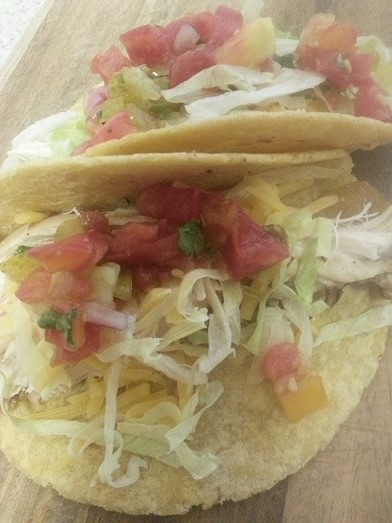
Let’s beef this chicken up. Root vegetables are a perfect hearty addition. Rub a touch garlic and rosemary to the skin of this bird. Cover with foil and pop in the oven for 10-15 minutes and serve with roasted potatoes. Pinot Noir and roast chicken is a time honored classic and nothing short of inspiring!
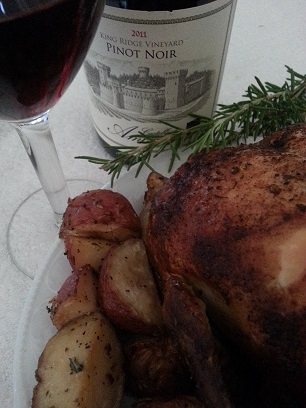
Mary Davidek C. S., S.W.
Storm The Castle—July 14th Is Bastille Day!

Mary Davidek
Storm The Castle—July 14th Is Bastille Day!
Most national days are in celebration of exactly what you would expect a ‘national’ day to celebrate. For example the national day of the United States, the 4th of July, marks the signing of a declaration of independence from a colonial power. Some countries mark the day the colonial power actually left their occupation for such freedom celebrations. Other countries like Germany and Italy celebrate unification and others like quirky Austria celebrate its declaration of neutrality. A handful of countries such as the United Kingdom and Denmark have no national holiday to celebrate. However, few countries can top France for the utter cool factor of its national day which commemorates the day an angry mob stormed a medieval castle prison known as the Bastille.
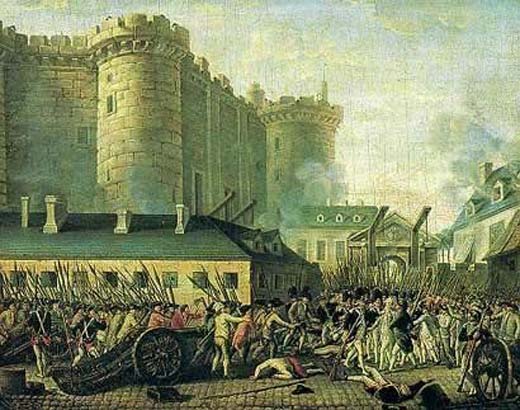
Angry mob storms the Bastille!
In France July 14, commonly referred to as la fête nationale, became an official holiday in 1880. From the beginning, speeches, parades, and fireworks, along with public revelry, were part of the celebration. Likewise, Francophiles throughout the world have taken up the observance of Bastille Day, celebrating with dinners of French cuisine, concerts of French music and enjoying all festivities with French wine.
Regardless of your origin, your nationality… your roots– It’s Bastille Day! Celebrate the onset of the French revolution in the spirit of equality and liberty. In honor of this national day, I have put aside my affinity for all things Italian and opened a couple of bottles of vin du France.
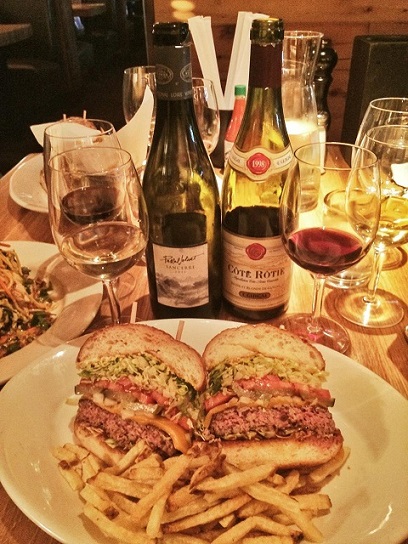
Okay, so maybe a hamburger is as American as it gets but the fries—definitely French!
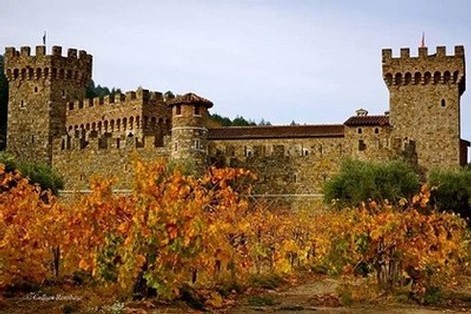
Castello di Amorosa– encircled by lovely vines and waiting to be stormed!
Pinot Noir— The Art of Getting There

Mary Davidek
Pinot Noir— The Art of Getting There
“There is no ‘there’ there”. Gertrude Stein’s often quoted prose is commonly used to describe something that lacks soul, culture, life, or identity. While Ms. Stein was referring to the faceless existence of city-life, some critics have proclaimed this lament when speaking of grapes grown in and the wine making efforts of America.
The French speak of ‘terroir’ when referring to winemaking and the wines of France which is to say grapes are a reflection of the region in which they are grown; the soil, the climate, the aspect of a hillside, the amount of rain, the surrounding vegetation, etc. The United States’ AVA system has been criticized as nothing more than a weak effort to create a false sense of place in the wines produced — an illusion– as they state, there is nothing ‘there’.
*le sigh*
I decided to look beyond Cabernet Sauvignon, the reigning king of grapes for my initial attempt at disproving this theory and thus directed my attention to a varietal that, in my humble opinion, is ‘place’ personified. Pinot Noir, the thin skinned red wine grape of the Burgundy region of France has become increasingly popular with wine-buying wine-drinking Americans. It is a classic, elegant, food friendly wine—its enigmatic character and appeal as elusive as it is obvious.
Pinot Noir grapes are grown around the world but they flourish in cooler growing regions. In Oregon, the Willamette Valley is nearly the same latitude as the famed Burgundy region of France and has become synonymous with world class Pinot Noir. Oregon producers have found their sense of place as the Pinot fruit embodies the sophistication and finesse of a great Burgundy yet displays layered earth and bright red fruit summoning unrestrained California productions.
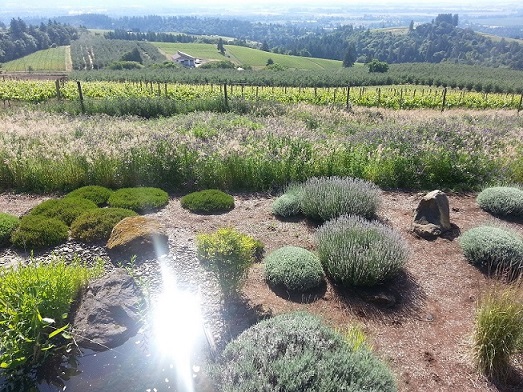
The rolling green hills of temperate Willamette Valley provide the perfect place for cool-climate loving Pinot Noir
California Pinot Noir is more mercurial stylistically without any one style from this large and geographically diverse growing area. From Santa Barbara and the Central Coast to the south and Sonoma County and Anderson Valley in the northern half of the state, diverse topography and weather patterns separate this region of more than 450 miles. From Santa Barbara and the Central Coast we find opulent wines with definitive Pinot Noir fruit that reflects its warmer and more southern roots with a controlled strength. Cooled by the San Pablo Bay, the Carneros region straddles both Napa and Sonoma Valley and shows hints of spice and brightness unique to these cooler vineyard sites of this sun-drenched area. North of Carneros we find the Sonoma Coast where Pinot shows depth and earthy complexity with some of California’s most acclaimed Pinot Noir producers firmly planted in this lush pacific expanse. Further north of Sonoma we find California’s newest Burgundy-like super star in the highly praised and sought after Anderson Valley of Mendocino County. Here the ocean cooled valley floor rarely sees summer temps above 85 degrees….even in the height of the season. Pacific marine influence floods the valley floor with morning coastal fog providing slow even ripening. Enthusiasts agree this temperate region yields fruit of subtle distinction.
A Pinot Noir trio from Castello di Amorosa; Los Carneros, Anderson Valley and the highly acclaimed King Ridge of Sonoma Coast. Each with expressive fruit and character from unique vineyard locations.
As far as American winemaking efforts, maybe we have not come up with anything quite as mysterious as ‘terroir’ to encapsulate the distinctive place of our wines….maybe we never will. But, as the saying goes, sometimes the best part of the journey is getting there.
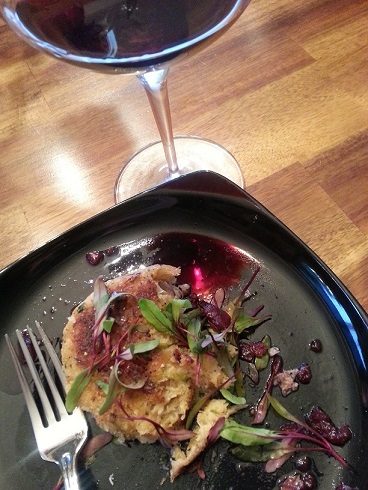
Dungeness Crabcakes with Rainier Cherry Pinot Noir Reduction
For the reduction-
- 10-15 ripe cherries, pitted and chopped
- 10 ounces Pinot Noir
- 1 Tbsp Honey
- 1 Tbsp Seasoned Rice Vinegar
- Pink peppercorn to taste
Add all ingredients to sauce pan. Slowly reduce over medium heat.
Mary Davidek C. S., S.W.
All the Right Stuffing

Mary Davidek
All the Right Stuffing: Recipe and Wine Pairing for Thanksgiving
My first attempt at preparing Thanksgiving dinner sans mother was in 1995, a rite of passage. This particular meal was not a small intimate dinner for myself and my husband, this feast included 2 harsh scrutinizing critics; my step children.
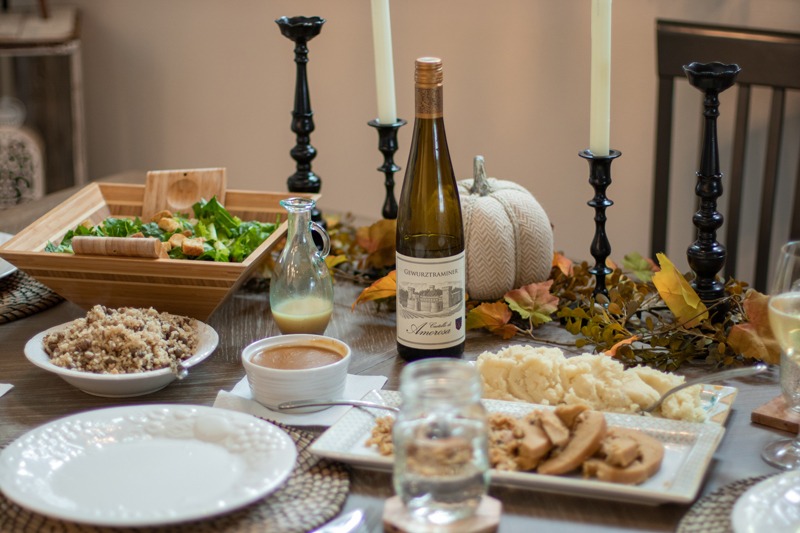
We rented a cabin near Lake Tahoe as we thought it would be the ideal setting for a mountain holiday. The prospect of a Turkey day snowfall and a warm fire seemed perfect. Unfortunately, my mother hurt her leg 3 days before the trip which left more than travel arrangements to rearrange, she was chef de cuisine!
Finally, Thanksgiving Day arrived which meant the inevitable trip to the grocery store, but first, a phone call to Mom. Amidst tears (mine), frantic note-taking (me), and some tricks (hers) I was set to create a yummy meal. With the list in hand, including the deal-breakers (nothing with carrots, nuts, or mushrooms for Mikaela and for Philip; no peas, cauliflower, or squash). *sigh*… off to the market.
I bought more than was necessary but I was in no position to make last-minute shopping trips, this was a one-time performance. Turkey breast; check. Wine; got it. Yams, mashed potatoes; easy. Wine; yes again. Gravy; not too difficult. Biscuits, the kids love little crescent rolls. Pie and whipped cream, double-check. Wine; yes, will need a 3rd bottle. But (cue Jaws theme) what about the stuffing?! The very stuff of which Thanksgiving can be made or broken. I got the stuff for everything else but the stuffing! And my Mother‘s stuffing was the benchmark, the Alpha, the Omega of stuffing. Turkeys were honored to be served with this stuffing. How could I have forgotten such a fundamental Thanksgiving Day dish? After all, I had watched her make stuffing for almost 30 years! That’s 30 Thanksgiving dinners! Wait…um….er…..yes. Ok, thanks Mom, I got this.
We sat cross-legged at the coffee table in the middle of a cozy living room, a fire was crackling and the snow was falling. Thanksgiving Dinner 1995 garnered rave reviews, the critics were delighted and the stuffing recipe was just right. Happy Thanksgiving!
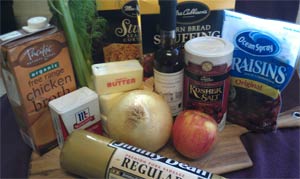
Some very traditional ingredients plus a few additions: cornbread stuffing mix, broth, butter, salt, pepper, sweet onion, apple, fennel, dried cranberries, salt, pepper, grape seed oil, and sausage. Lean turkey or chicken sausage is usually my preference, but for stuffing, I want the extra richness of pork sausage.
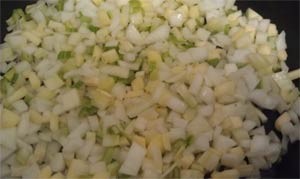
Sauté onion, fennel, and apple in grapeseed oil. Grapeseed oil brings complex fruitiness and is great for sauté. If available, use fennel instead of celery, it has a sweetness that compliments the onion and tart apple. This sauté has incredible aromatics.
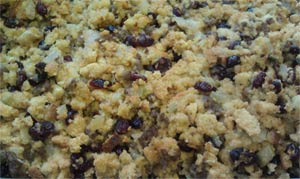
I prefer cornbread but any stuffing mix will work. Add dried cranberries for a splash of color and a hint of acidity. Mix with browned sausage and sautéed veggies. Add melted butter and broth per instructions increasing broth amount by 1/5th. Bake at 350°F for approximately 40 minutes, remove foil and bake an additional 5 to 10 minutes.
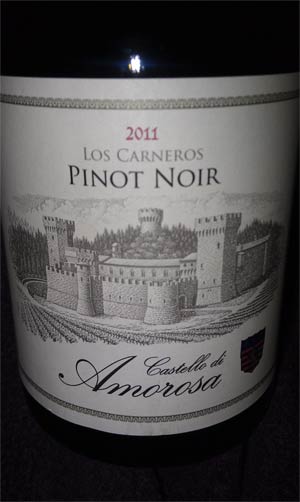
Pinot Noir and Thanksgiving are a given at my table but with the abundance of savories, it is hard to decide on a style of Pinot most suited for the big feast. Castello di Amorosa Los Carneros Pinot Noir is on the lighter side of the Pinot Noir spectrum, perfect for turkey and all the trimmings. Seductive notes of mulled spice on the nose and a mouthful of bright fruit will complement the entire spectrum of Turkey Day dishes. To make this Pinot pop, serve at 62 to 65°F.
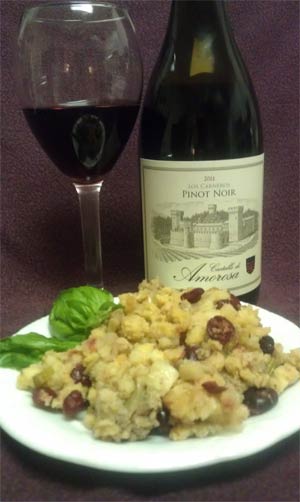
Happy Thanksgiving!
